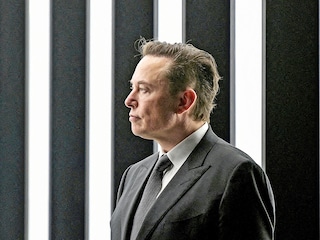Explainer: Inside Elon Musk’s $1 trillion equity pay package
How Tesla’s shareholders backed the world’s biggest CEO payout and what it says about equity-linked power


At the company’s annual meeting in Austin, Texas, shareholders of the electric vehicle manufacturer Tesla voted to approve a compensation plan for CEO Elon Musk that could be worth up to $1 trillion in company shares over the next decade.
The meeting, held on Thursday (local time), saw more than 75 percent of participating shareholders supporting the proposal.
The approval comes despite objections from several major institutional investors, including Norway’s sovereign wealth fund, who argued that the package gives Musk excessive control and rewards. Yet, Tesla’s board and most retail shareholders remain firmly behind Musk’s leadership, crediting him with building the company into a trillion-dollar brand.
Bonus is additional cash (or other perks) awarded typically based on short-term performance (such as annual or quarter targets).
Equity-based pay ties the executive’s reward to the value of the company’s stock or long-term performance. It is designed to align the CEO’s interests with those of shareholders. So, in theory, if the company’s value goes up, so does the CEO’s wealth.
Because it’s linked to long-term performance, equity pay is often seen as a retention tool that ensures the executive stays on board for the vesting period or to meet milestones.
Unlike salary or bonus, equity pay can magnify gains (or losses) for the executive depending on stock price movements, market sentiment, and fulfilment of performance conditions.
After stepping down in 2019, Neumann reached a settlement with SoftBank, WeWork’s largest investor, under which he received about $480 million in stock and cash, the ability to refinance $432 million in debt, and permission to sell $578 million in WeWork shares, as reported by Reuters.
During the same period, OYO reported Rs 260 crore in share-based payment expenses linked to employee stock options. However, unlike the large individual equity packages seen among US founders, this was a company-wide ESOP expense rather than a personal grant to Agarwal.
His ownership has declined steadily from around 22 percent in 2016 and 17 percent in 2020, largely because of share sales to fund other ventures, including his 2022 purchase of Twitter (now X), and due to dilution from new stock issuance. However, the newly approved 2025 CEO performance and interim stock awards could significantly increase his stake, potentially restoring it to over 25 percent. Major institutional investors such as Vanguard and BlackRock each hold smaller positions, generally between 5 and 7 percent.
Market cap milestones: Musk’s new compensation plan is divided into 12 tranches. Each tranche unlocks only when Tesla meets a specific set of goals. Tesla’s current market value is about $1.5 trillion. Musk does not earn anything from this new pay package until Tesla’s market value reaches $2 trillion. After that, every time the company’s value increases by another $500 billion, another portion of his compensation becomes available. The final goal is for Tesla to reach a total value of $8.5 trillion by 2035.
Adjusted EBITDA goal: Tesla must generate $400 billion in adjusted core profit (EBITDA) over four consecutive quarters to unlock the final parts of Musk’s pay package.
Delivery of 20 Million Vehicles: By 2035, Tesla must cumulatively produce 20 million vehicles. The company has built just over 8 million to date, meaning Musk must oversee an additional 12 million units, roughly 150 per cent more than Tesla’s lifetime output so far. This translates to producing around 2 million vehicles annually.
One Million Robotaxis: Tesla must have 1 million self-driving robotaxis in commercial operation for at least three consecutive months. Currently, pilot fleets in Austin number only in the hundreds.
One Million Optimus Humanoid Robots: The company must deliver one million units of its humanoid robot, Optimus, priced at roughly $20,000 each. These machines are still in prototype stages.
10 Million Full Self-Driving (FSD) Subscriptions: Tesla must reach an average of 10 million FSD subscriptions over three consecutive months. As of early 2025, only about 12 percent of Tesla owners used the FSD service.
CEO Succession Plan: Two of the final stock tranches require Tesla’s board to establish and approve a CEO succession plan. While details remain undisclosed, the condition prevents Musk from retaining unvested shares indefinitely if he steps down.
Musk Must Remain CEO: Elon Musk must remain CEO or hold another executive position to receive each tranche. If he exits Tesla before the 10-year period ends, unvested shares are forfeited, except under specific circumstances like a change of control.
Tesla has publicly said Musk will receive no salary or bonus under the plan; the value is entirely via shares unlocked by performance.
In April this year, Reuters reported that seven state treasurers warned Tesla’s board that Musk’s “external commitments raise serious questions about whether Tesla’s leadership is fully engaged in addressing the company’s core challenges”.
Amid this, Tesla’s board and key investors see Elon Musk’s equity-based package as a way to keep him focused on Tesla’s growth. Cathie Wood, CEO of ARK Invest, a major institutional backer of Tesla, defended the plan on X. “I do not understand why investors are voting against Elon’s pay package when they and their clients would benefit enormously if he and his incredible team meet such high goals,” Woods wrote.
First Published: Nov 07, 2025, 16:38
Subscribe Now